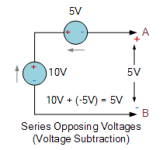larsb said:
Many readers will read this thread and think that high kV motors always will provide more power.
I think that misconception (which I've never even come across) would have been dispelled by reading any of the threads delving into this topic.
> torque-speed plot with a triangular shape will be totally different once your controller adapts an unlimited variation of drive voltages to get a limited current
Yes! critical point, I think a lot of my misunderstandings have come from people talking from a theoretical motor-only POV
> Motor has a max rpm before they burst or heat in an unacceptable way due to eddy losses.
This rpm can be reached either with low kV*high voltage and low current or high kV*low voltage with high current
In my case, the top end is not even a consideration, in all cases the CAv3 (or FOC torque-throttle controller equivalent) is protecting against hitting such limits.
My concern is the heat produced by high current at the low rpm end, as I seek maximum torque without triggering those protections.
A high **battery** voltage doesn't help, since the controller is buck converting that down in startup mode or heavy loads up steep hills.
Setting the top speed reduction aside
A lower kV gives more effective low-rpm torque in that context
Right?
assuming motor not "saturated" whatever that means (ELI5?)
danielrlee said:
john61ct said:
I am in no way saying changing the kV winding does anything for performance **overall**.
What I am clear on, is that **in this use case**
- DD hub only, no gearing
- speed past 20mph is irrelevant
- heavy weight, say 450+ lbs
standing starts & long steep hills, so highest possible torque needed at well under 10mph, even 3-6mph would be worth sacrificing efficiency
heat being the limiting factor
trying to avoid a 30lb motor
** then** the low-volts / high-amps context means the kV winding makes a significant difference.
That is ALL I am saying, only within that use case, which does not apply to 99.9% of bikers out there.
And not overstating its importance, not like reducing the wheel size for example, but definitely fighting the myth that it's "always" insignificant.
I must be missing the point you are trying to make.
…
A certain winding might be better suited in a specific usage scenario where other parameters have been constrained to a fixed value
Well not "fixed" per se, but yes, for clarity I am **only** discussing that specific scenario, and
I'm not talking about any "specific" winding, in trying to keep the "low-rpm torque vs motor weight" ratio" up as high as possible, it seems "slowest kV / winding" is what I'd need.
billvon said:
you need a higher voltage to force enough current through the windings to reach (or maintain) a given speed, since higher speeds = shorter phase on-times = shorter time to ramp current up.
…
there may be too much inductance to force enough current through the winding at high speed. At low speed, it's not an issue because there is more time to ramp up the current due to long "on" times for each phase.
…
So for real world combinations of battery and inverter, lower Kv ratings will give you more torque at the bottom end, at the expense of speed at the top end.


